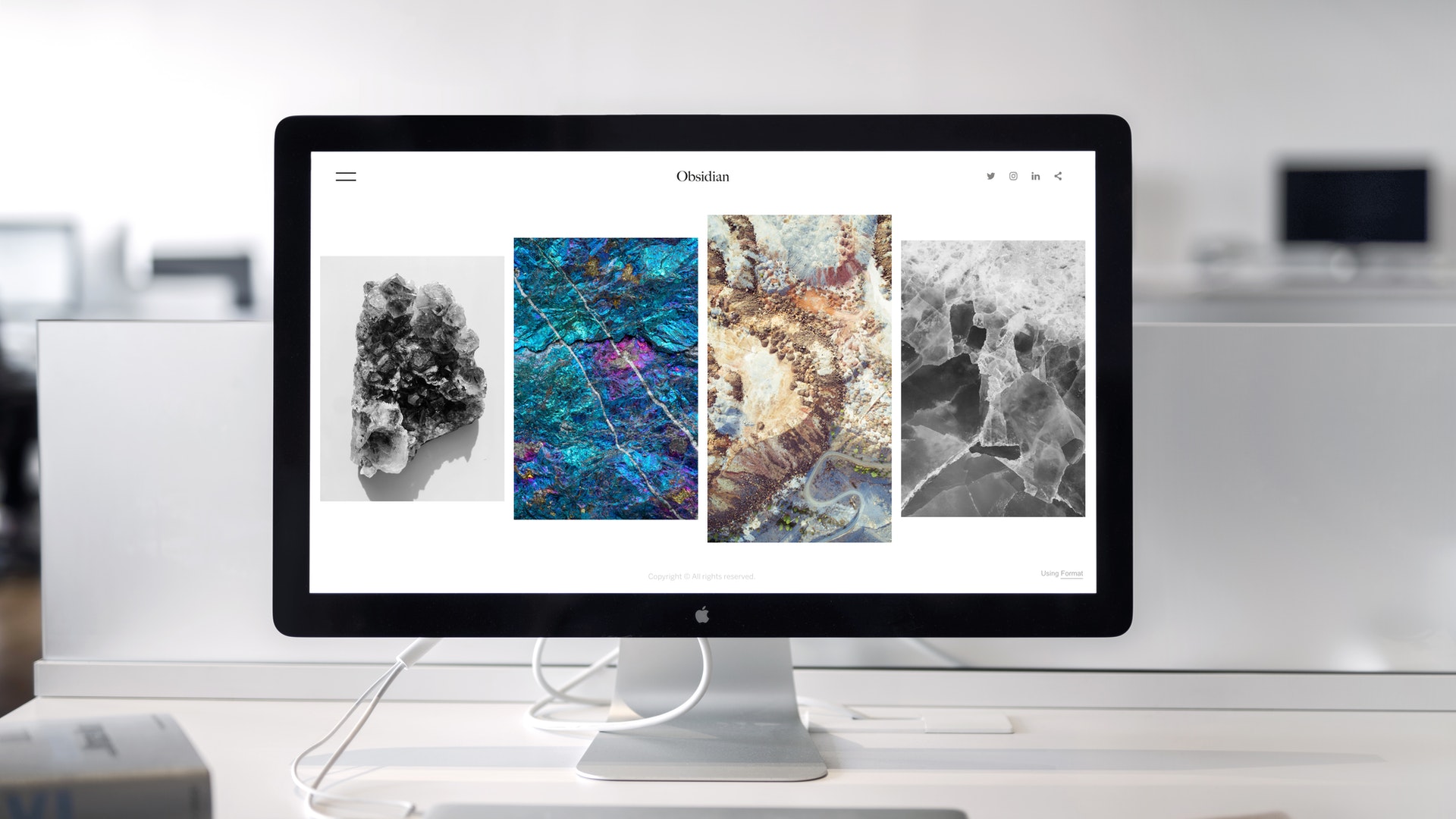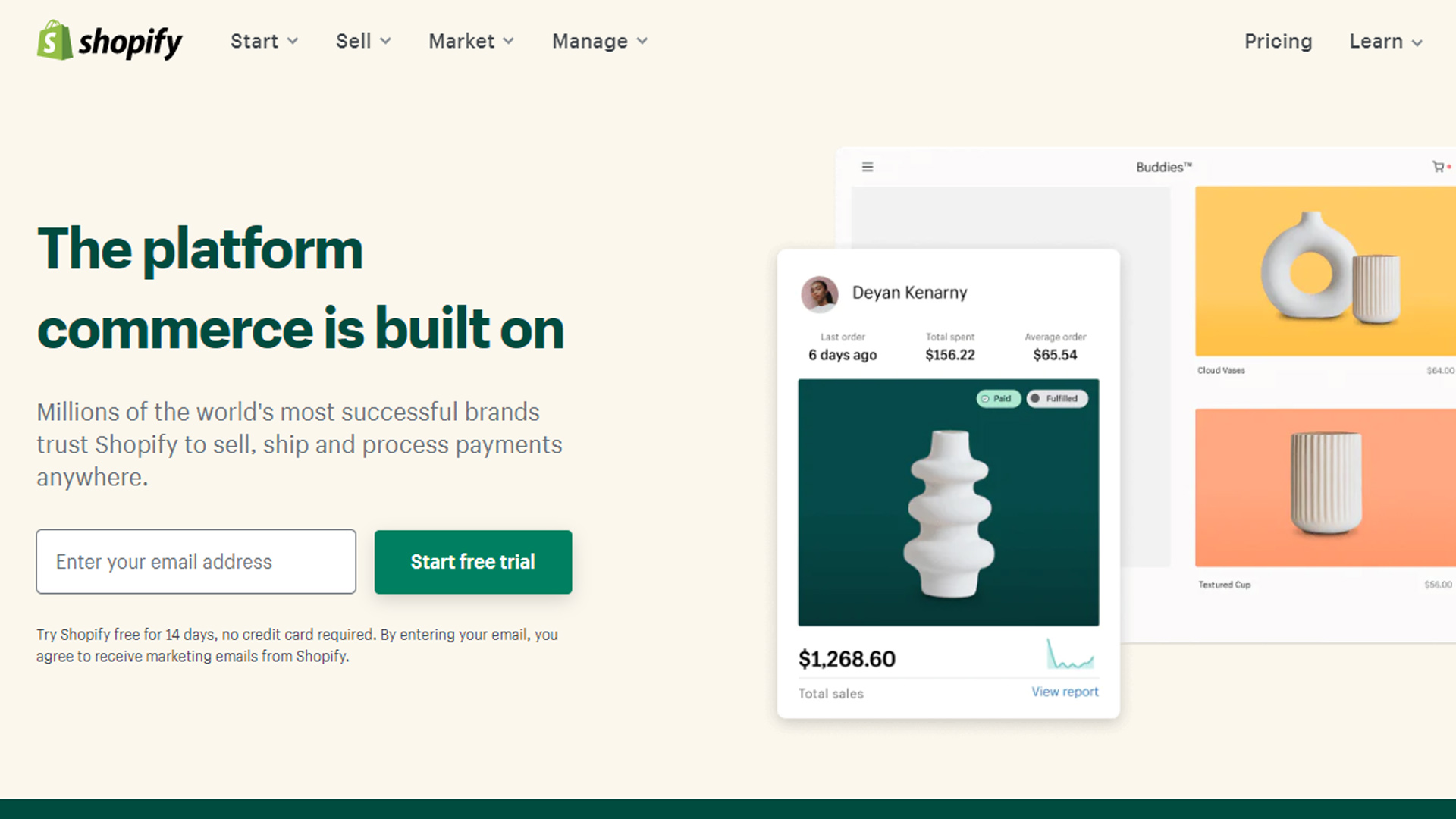How to make an ecommerce website
We explain how to make an ecommerce website, outlining the many things to consider, and covering some of the most important


There’s no better time than now to learn how to make an ecommerce website, but if you’ve never built one before, it can be difficult to know where to begin.
In our now-changed world, many people are still unable or unwilling to visit physical stores, so using one of the best ecommerce website builders is imperative if you want your business to take advantage of the online shopping boom.
We discuss what’s required to launch your own online store, and outline some of the best website builder options for ecommerce sites as we walk you through how to make an ecommerce website.
Step 1: Create a plan

So: you’ve got a great idea for selling something online, and you can’t wait to see this come to life. However, if you want to ensure long-term success for your ecommerce project, you need a plan that accurately describes your business and how it will run.
It’s essential to consider the following:
- The product(s) you will sell
- Your potential customers
- Payment processing methods
- Inventory management
- Order tracking
- Shipping
- Managing returns
You’ll need to know about these elements before building your site, because some will have a direct impact on the framework or technology you use to build it with. For example, if a supplier can only send product data in a certain format, you may need to choose a framework that supports importing that format.
If you press on, and start building a site without considering these aspects, you might find out about incompatibilities that are impossible to fix, and it might be too late. This could force you to start all over again, and so extra consideration and care at the outset could save a lot of time and headaches later.
Get the ITPro daily newsletter
Sign up today and you will receive a free copy of our Future Focus 2025 report - the leading guidance on AI, cybersecurity and other IT challenges as per 700+ senior executives
Step 2: Choose the right ecommerce platform

Once you've got an understanding of these elements, you can focus on which ecommerce platform you'll use. These include nearly all the functionality you’d need to run an online store, but ultimately it’s a matter of choosing the right one for you and your needs.
There are many to choose from, and they generally fall into four different types:
- All-in-one software as a service (SaaS) platforms like Shopify, BigCommerce, and Wix
- Open-source shopping cart applications like Magento or OpenCart
- Open-source shopping cart modules that can be added to existing CMSs, like WooCommerce for WordPress
- Add-on shopping carts, like Snipcart, that can be added to any website without the need for a CMS module
Let’s take a look at these in a bit more detail.
SaaS platforms
If you’ve never built a website and have no idea where to start, SaaS platforms are worth considering. You have to pay a monthly subscription, but they can take you from zero to fully functioning sites in very little time. Recurring fees also usually include the cost of your web hosting.
They often come with a large number of templates to get the overall framework for the site built in just a few minutes. But they also include easy-to-use web builders that let you customise the templates you’ve chosen. Alternatively, you can start from scratch if you have a particular design in mind. In some cases, though, you may find builders aren’t as good for completely custom designs.
SaaS platforms also include nearly all the functionality you’d need to run an online business. However, some functionalities may not be available by default, and you’ll have to pay for additional apps. The advantage of SaaS platforms is that you can get a website built quickly with all the details taken care of.
Disadvantages include the sometimes high recurring fees, and potential limits on how much you can customise your site.
If you’ve never built a website and have no idea where to start, SaaS platforms are worth considering. You have to pay a monthly subscription, but they can take you from zero to fully functioning sites in very little time. Recurring fees also usually include the cost of your web hosting.
They often come with a large number of templates to get the overall framework for the site built in just a few minutes. But they also include easy-to-use web builders that let you customise the templates you’ve chosen. Alternatively, you can start from scratch if you have a particular design in mind. In some cases, though, you may find builders aren’t as good for completely custom designs.
SaaS platforms also include nearly all the functionality you’d need to run an online business. However, some functionalities may not be available by default, and you’ll have to pay for additional apps. The advantage of SaaS platforms is that you can get a website built quickly with all the details taken care of.
Disadvantages include the sometimes high recurring fees, and potential limits on how much you can customise your site.
Open-source shopping cart applications

If you dislike the idea of ongoing fees and lack of customisation, then your solution is to build a site yourself. Choosing a full open-source shopping cart application is one of the ways you can do this.
The main difference between these and an SaaS platform is that with your own shopping cart, you’d pay more upfront to have the site built in the first place. But depending on the volume of orders your site processes, it could pay for itself quite quickly.
The only recurring fee you'll probably need to pay is web hosting, which tends to be included in the subscription cost of SaaS platforms. However, paying for hosting alone can work out much cheaper.
The other main advantage is that you have more freedom and control to create a site unique to your business. If you have the need for custom functionality, it's easier to have that coded and added to a site where you control the full codebase than with an SaaS app.
Shopping cart modules
Shopping cart modules are similar to applications, except that they're for existing CMSs. Applications tend to be used to build a whole site, and are ideally suited to ecommerce. However, if you have an existing site and want to add ecommerce functionality, you could add an ecommerce module to the CMS your site uses, or build a new site with your preferred CMS and do the same.
Most CMSs—whether popular ones like WordPress, Drupal, and Joomla, or more niche options like Craft and Statamic—have ecommerce modules that can be installed. Similar to shopping cart apps, you’d pay more upfront to have a module installed and set up, but you’d also benefit from the same levels of flexibility.
Add-on shopping carts
This category of carts probably has the smallest number of options. But it can be a good choice if you don’t want to pay recurring fees or spend a lot on ecommerce integration. With these—examples include Snipcart or PayPal pay buttons—you add a small piece of code to existing sites to add ecommerce capabilities.
The back office features may not be as comprehensive as the other options we’ve described, but they strike a nice balance between low cost and flexibility in how you build your site.
Step 3: Choose the right team to build your site

If you choose an all-in-one SaaS platform, you may not need any help with building your site. But if you choose an open-source application or module, or an add-on shopping cart, and you don’t have any coding knowledge, you’ll need a reliable web development team to assist you.
It can be tempting to post an ad on a freelancer website and take the cheapest bid, but “you get what you pay for” holds true in web development too. What you save in freelancer fees may not be worth the extra time and hassle if you choose the wrong supplier.
You’ll want to find a person or team that has experience in ecommerce, but is also good at communicating with you, and understands your goals for the project.
Step 4: Choose the right web hosting
Once you’ve decided which ecommerce platform to use, you’ll be able to move on to choosing the best web hosting option. This is best left until after you know what you’ll be using to build the site, because different platforms and systems have different requirements.
Many web hosting providers also have plans tailored to certain systems, so you may want to search for one that specifically supports the platform you’ve chosen. You’ll want to choose a web host that can guarantee great performance, in terms of not only how quickly your site will load, but also near-perfect uptime.
If you lose money for every minute your site is down, you don’t want your web hosting to cost you. And because ecommerce involves dealing with people’s personal and financial information, you'll also want to choose a company that provides high levels of security.
How to make an ecommerce website: Summary
As we've seen, a lot of thought needs to go into building a successful ecommerce website. You need to consider how your online business will run, the platform on which to build your site, the team to help you build it, and the provider to host it.
Even though you might be itching to make a start, a bit of time devoted to planning at the start of the project will ultimately save you time, money, and headaches.
Further reading on website builders
Take a look at our website builder comparisons pitting: Wix vs Shopify; Wix vs Squarespace; GoDaddy vs Wix; Wix vs Squarespace vs Weebly; and WordPress vs Wix vs Squarespace. If you're just starting out, learn how to build a site from scratch. Wondering whether you need a website for your small business? Look at why you need one; see some top tips for creating a small business website; explore the top tools needed; and discover the foundations of a successful small business site.
John is a freelance writer and web developer who has been working digitally for over 30 years. His experience is in journalism, print design and web development and he has worked in Australia and the UK. His work has been published in Future publications like TechRadar, Tom's Guide, and ITProPortal.